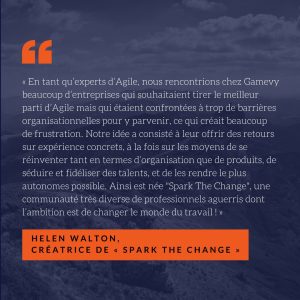
It’s funny how things work out, what we see when we open our eyes and raise our curiosity.
In particular, two events this week that in one moment filled me with dread, then filled me with hope and possibility.
Firstly, on Wednesday a colleague sent me an article from The Economist about the quality of managers in the UK. The article reflected on the following:
The low productivity of British workers has several possible culprits. Inefficient family-run companies are sometimes blamed, as are poor workforce skills. But whereas these problems are well documented, another factor is glossed over: the mediocre performance of British bosses. John van Reenen, director of the Centre for Economic Performance at the London School of Economics, argues that the standard of British management is “significantly below” that in leading countries. His team carried out 14,000 interviews with employees around the world and found that British workers rated their supervisors lower than those in countries such as America, Germany and Japan. “We are not in the premier league,” he says.
Management as a skill has rarely been taken seriously in Britain, where the cult of the gifted amateur prevails. Ann Francke, the head of the Chartered Management Institute (CMI), says that four out of five bosses are “accidental managers”: they are good at their jobs but are then promoted into managing a team or a department, without further training. Unsurprisingly, “they flounder”, she says. Mr van Reenen reckons that about half the productivity gap between Britain and America could be attributed to poor management.
Inefficient family run companies? Funny that, because on the very next day I found myself in need of the services of a family run company. My wife’s lovely Michael Kors watch had used up all of it’s battery charge and a replacement power cell was needed. The most obvious place to get this done is my local Timpsons.
You may know of Timpsons. You may even be a customer of theirs – everything from key cutting, engraving, shoe repair to wrist watch maintenance. But do you know John Timpson’s approach to management?
In a recent article in The Independent, Mr Timpson explained his philosophy.
His way of avoiding top-heavy management is to do away with their jobs. “When I introduced my ‘upside school of management,’ which is putting the customer at the top of the matrix and management at the bottom – and giving staff the freedom to run their own shops – our middle managers didn’t like it at all. Many left.”
As he admitted, Timpson is a funny business. It does all the odd jobs that no one else wants to do, whether its key-cutting or, now, watch and mobile phone repairs. “This wouldn’t have worked if we hadn’t understood the importance of picking the right people and giving them the freedom to look after customers and to decide how to run their shops and to set their own rules. That is the core of our success.”
So what was my experience? As someone who is often frustrated by lack of customer service, I find the whole Timpson experience leaves me with a smile on my face.
I took the opportunity today to ask the 2 guys serving, what is life really like as an employee?
Their answer was simple “Great!”
Why, I asked. “Because we are left alone to get on with it. This is our store. We get guidance, sure, but we make the decisions because we are with the customers every day”.
And how does that make you feel? “Trusted!” was the immediate response.
But does this upside down school of management work commercially?
Well, Timpson recently reported sales up 12 per cent to £189m and profits 38 per cent higher at £18.7m. Furthermore, over the past three years the company has grown rapidly – from 800 stores to 1,400.
Yet again, more evidence that shows having engaged staff not only results in a better, happier work place, it also brings commercial value.
By: Mark Manley from Gaia Leadership
If you would like to learn more about how to build engagement within your organisation, please contact me
mark.manley@gaialeadership.com
I write these articles as part of my own learning. Thank you for reading it.
If you like it, please share it.





 « Spark the Change » : décrypter et inspirer les bonnes pratiques
« Spark the Change » : décrypter et inspirer les bonnes pratiques 

